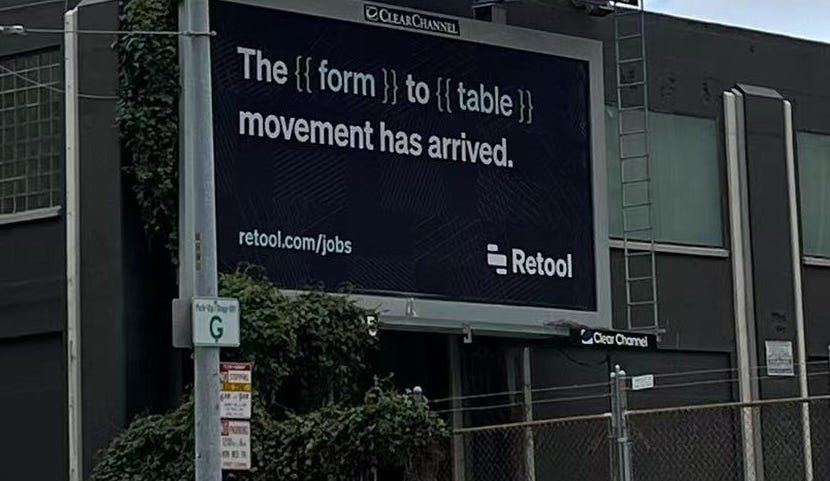Advertising for Startups
Week 41 of Founding Typogram
Hi, I am Wenting. I recently quit my job of seven years to build my start-up, Typogram, a logo design and editing tool for startup founder. We just launched our pre-order✨! Get a one brand lifetime license at a huge discount and edit your design forever.
As a startup, doing advertisements for your product is unavoidable. While Typogram hasn’t grown into the expansion stage yet — all of our traffic is organic created by our own content or referred by websites that we built — we do plan to put on advertisement once we officially launch.
Because of the foreseeable eventual “surrender” to the advertisement, I pay attention to how other startups do advertisements and how I feel about them as a potential customer.
Website Ads
For website ads, I had experience on both sides. I actually put ads on CSS ICON — I guess I can call myself an ads publisher! I was approached by an ads network called Carbon Ads, and they even mocked up how the ads would look on my website based on my project’s design system! The design mockup looks clean and fitting, but I wasn’t immediately convinced. Two years later, I was searching for side incomes again one night and finally pulled the plug. This is how it looks now — Carbon was nice because I can customize how the ads look:

How I felt about website ads
I like graphic design ads that are not moving/animated. A mini-poster, or even as simple as a line of text like what I published on CSS ICON is more preferred. Animated ads can capture attention, but they may not be good for brand building — when unpleasantly distracted, people will associate negative feelings with the brand. A side tip, not related but still: don’t use your logo as the loading animation, no matter how tempting! Not even when your logo is perfectly round and practically calling you to animate it as a loader gif(or SVG), DON’T DO IT! Because users will associate with the negative feelings from waiting with your brand.
Since Typogram is a web app, I intend to deploy website ads that are displayed on desktop browsers, as they can link directly back to my landing page without requiring visitors to switch devices.
Billboard Ads
Unconventional for digital products, but I see more and more billboard ads for digital products nowadays! I also hear an anecdote of a well-funded startup renting all the available billboards in a city such as Denver. Brex, a fintech startup, did this “dominate an area and be omnipresent” strategy and wrote a tweet storm about it:
Their billboard is cleverly designed based on location and surroundings, like this money tree billboard next to a tree:
Retool, a low-code app to build internal tools, also put on a lot of billboard ads in the San Francisco area. But confusingly, the call to action link was to their job boards:
I heard from an insider at Retool that it is because Billboards conversion took several quarters to materialize. While waiting for that eventual effect, the most actionable item now is hiring; therefore, they put the link to job boards. It is proven to be working — some candidates mentioned they noticed those billboards and saw it as a positive sign that the company was not running low on cash reserves and future runways.
How I felt about billboard ads
The downside of billboard ads is that for a digital product, users have to search the product name on their own to find it; while the impression is high, the click-through rate is low. Because it is not targeted ads, people who see the ads may not fit the user persona of your product, the conversion rate (to paid users) is going to be low. Billboard ads are more for building brand awareness!
TV Ads
What is even crazier than billboard ads for digital products is TV ads! I don’t regularly watch cable TV, so I didn’t know TV ads for digital products were so common these days until last weekend! Miro, a productivity app, put on a lot of ads on TV! It really made me astonished for a second to appreciate their deep pocket from VC funds — TV ads are the most expensive:
Another example of digital products put on TV ads is Calm, a meditation app. I noticed them when I tuned in to the 2020 US election. It was hard to miss them; when I was between holding my breath for another “too early to call” “key race alert,” the omnipresent gentle reminder to calm down and relax was both helpful and annoying.
How I felt about TV ads
TV ads gave me a more premium feel to the brand — I was impressed by Miro and Calm for getting on such a prestigious ads platform, traditionally reserved for big physical stores like Macy’s. It is great to build brand awareness and brand image. Compared to billboard ads which are on the lower end of the cost, TV ads naturally give a more premium feel to the brand image, making it more suitable for luxury brands and brands that value quality.
While it is more expensive than Billboards, they can convey longer and more meaningful messages. The context of viewing the ads is also significantly different — people are most likely driving or walking when they see billboard ads, and sitting on their couch with their phone in hand when viewing TV ads. It is much easier to search the brand name after seeing TV ads.
Hear from You
Have you ever put on ads for your company? What is your most recommended ads channel? Any tips for me as a newcomer to the space? I am keen to hear from you!
❧
See you next week! If you have friends who are interested in founding startups, please consider sharing my newsletter with them!





